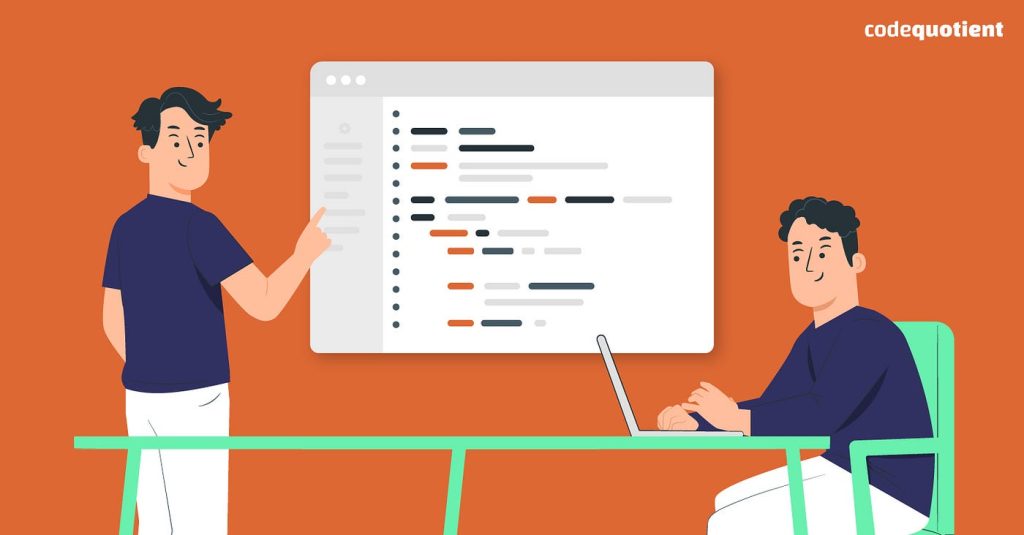Landing an offer at a top tech company still means winning the coding interview, and 2025 hasn’t made it any easier. Yes, AI copilots autocomplete half your functions, but interviewers now expect you to spot Big‑O foot‑guns, juggle streaming data, and explain trade‑offs in plain English. That’s why Cracking the Coding Interview in 2025: Ultimate Prep Roadmap has become the phrase on every candidate’s lips—and the tab quietly open beside LeetCode in hundreds of browser windows.
This marathon guide goes deeper than recycled question lists. You’ll learn how the interview meta‑game shifted post‑ChatGPT, which skills matter most on each platform, how to build a targeted 12‑week study plan, and why mock interviews still trump silent grinding. We’ll casually mention Cracking the Coding Interview in 2025: Ultimate Prep Roadmap again later—partly for SEO, mostly to keep you centered on the goal.
The Interview Landscape Has Changed
- AI Detection Rounds – Companies add “explain your code” follow‑ups to sniff out copy‑paste solutions from copilots.
- Data‑Heavy Scenarios – Streaming and distributed‑system questions pop up even in mid‑level SWE screens.
- Language Breadth – Python and JavaScript dominate, but Rust and Go earn bonus points for back‑end roles.
- System Design Lite – Junior candidates still get a miniature design round; think “design a URL shortener” in 15 minutes.
- Remote‑First Pressure – Zoom interviews remove whiteboards, pushing candidates toward online IDEs (CoderPad, CodeSignal, HackerRank) that auto‑grade.
Understanding these shifts is half the battle; the other half is disciplined practice.
Cracking the Coding Interview in 2025: Ultimate Prep Roadmap for Algorithm Mastery
1. Core Data Structures—Still Non‑Negotiable
| Structure | Must‑Know Ops | Gotcha |
|---|---|---|
| Arrays | Two‑pointer, prefix sums | Overflow on 64‑bit sums |
| Hash Maps | Collision handling, ordering | Python dict insertion‑order assumption |
| Trees (BST, Trie) | In‑order vs level‑order | Recursion depth limits |
| Graphs | BFS, DFS, Dijkstra, Union‑Find | Directed vs undirected edge traps |
| Heaps | k‑largest stream, median maintenance | Custom comparator edge‑cases |
| Intervals | Sweep‑line, merge sort | Off‑by‑one closed/open |
Commit them in language‑agnostic pseudocode, then port to your primary language.

2. Pattern‑First Question Tackling
Almost every 2025 problem reduces to one of 15 classic patterns—sliding window, fast/slow pointer, backtracking with pruning, DP on subsequences, etc. Build a mental index:
- Sliding window – variable‑sized substring with constraint
- Monotonic stack – next greater element, histogram max area
- Topological sort – task scheduling, course prerequisites
- Bitmask DP – set cover, traveling salesman small N
- Greedy + Sort – meeting room allocation, canon merge intervals
Practice categorizing questions before typing a single line.
3. Leverage AI—Responsibly
Copilots accelerate boilerplate but will sabotage you if you don’t verify:
- Prompt for hints: “Outline an O(n log n) approach for …”
- Ask for edge‑case lists: “Give tricky test cases for my solution.”
- Never copy full answers into practice IDE—build muscle memory yourself.
Cracking the Coding Interview in 2025: Ultimate Prep Roadmap for System Design & Behavioral Rounds
Mini System‑Design (45 Minutes)
Hiring managers expect:
- Clarification → Scope – confirm functional and non‑functional requirements.
- High‑Level Blocks – client, API gateway, service, data store, cache.
- Bottleneck Deep‑Dive – pick one component and discuss scaling.
- Trade‑Off Summary – latency vs throughput, consistency vs availability.
Practice with 15 sample prompts: chat app, feature flag service, ride‑sharing ETA, IoT metrics collector.
STAR Stories Matter More
AI code tools mean soft skills differentiate candidates. Prepare 6‑8 stories:
- Situation – legacy monolith, stringent deadline
- Task – migrate service, halve latency
- Action – refactored modules, containerized, set SLOs
- Result – 40 % speedup, zero downtime, promoted two juniors
Blend failures (“missed deadlines”) to show growth.
Building Your 12‑Week Study Sprint
| Week | Focus | Output |
|---|---|---|
| 1 | Diagnostics & Schedule | Mock test + time‑boxed calendar |
| 2‑3 | Arrays, Hash Maps, Strings | 50 problems, spaced repetition notes |
| 4‑5 | Trees, Graphs | Implement generic libraries |
| 6‑7 | Dynamic Programming | 30 DP problems, memorize patterns |
| 8 | Advanced Topics | Bitmask, Trie, Red‑Black tree intro |
| 9 | Mock Interviews | 4 live mocks, feedback doc |
| 10 | System Design Lite | 6 whiteboard diagrams photographed |
| 11 | Behavioral Stories | STAR doc + friend rehearsal |
| 12 | Taper & Review | Re‑attempt early misses, rest |
Use tools – LeetCode premium filters, Excalidraw for design diagrams, Notion spaced‑repetition flashcards.
Secret Weapons Most Candidates Ignore
- Contest Mode – Join Codeforces Div. 3; real‑time pressure > casual grind.
- Explain Solutions Aloud – Use Loom to record 5‑minute walkthroughs, catch logic gaps.
- Keymap Uniformity – Mirror VS Code shortcuts inside interview IDEs to reduce mental context switches.
- Daily Edge‑Case Flashcards – “Empty list input?”, “Negative k?”, “Unicode emoji in string?”—program your reflexes.
- Sleep Engineering – 2‑week pre‑interview schedule aligning circadian rhythm to local timezone—especially if interviewing abroad.
Common Pitfalls & Fixes

| Mistake | Fix |
|---|---|
| LeetCode autopilot – solving by muscle memory | Write the test suite first, then code |
| Over‑optimizing early | Begin with brute, then optimize |
| “Uhm” paralysis in live coding | Narrate thought process, even wrong leads |
| Skipping unit tests in practice | Treat every solution as production code |
| Ignoring keyboard shortcuts | Practice in the exact interview IDE |
Final Week Checklist
- Dry‑run camera, mic, dual monitors (external monitor may be disallowed).
- Shortcut cheat sheet taped behind webcam—companies can’t see it.
- Printed blank paper sheets and marker for diagrams.
- GitHub Gist of personal utility snippets (priority queue, Union‑Find).
- Healthy meal, 7+ hours sleep, 15‑minute light cardio morning of interview.
FAQ
Do interviewers penalize AI‑generated code?
Only if you can’t explain it. Use AI sparingly for syntax, own the logic end‑to‑end.
Is C++ still advantageous in 2025?
Yes for latency‑critical roles; Python’s readability dominates elsewhere.
How many problems should I solve before interviewing?
Quality beats quantity—200 thoughtfully reviewed problems often outperforms 600 rushed.
Do I need separate prep for each platform (HackerRank vs CodeSignal)?
Learn platform‑specific quirks (stdin format, template code) and practice two timed tests each.
What if I blank during system design?
Reset: restate requirements, draw minimal high‑level diagram, dive into one component—structure beats perfection.











